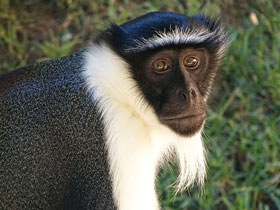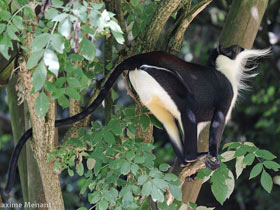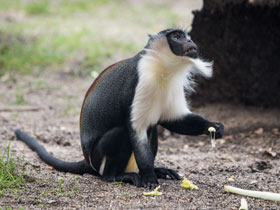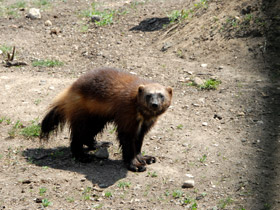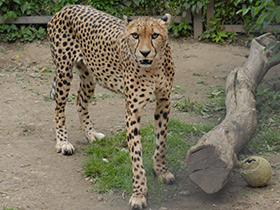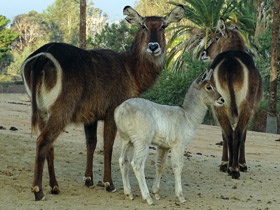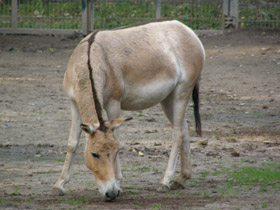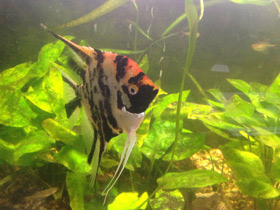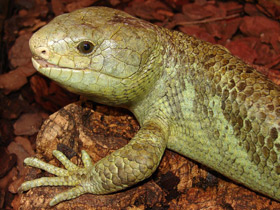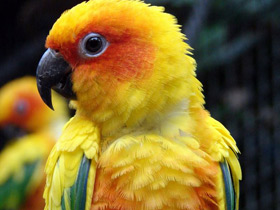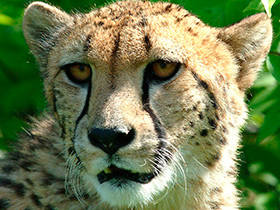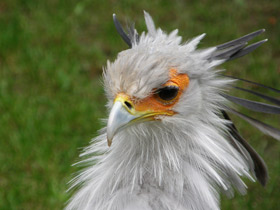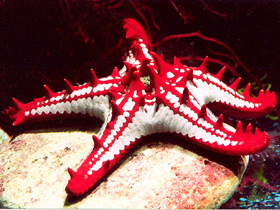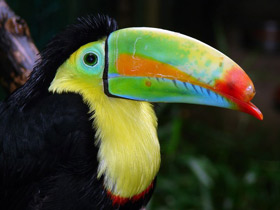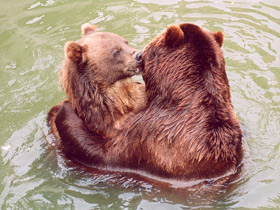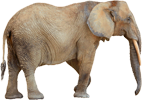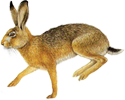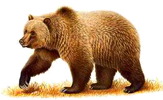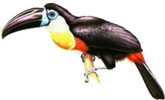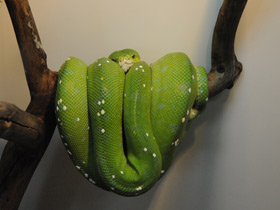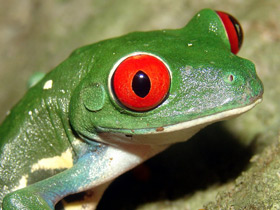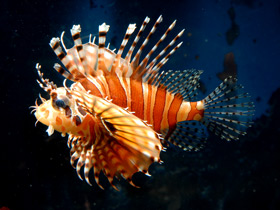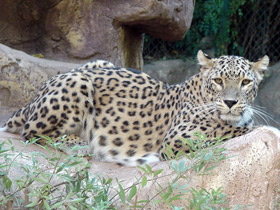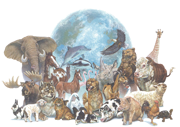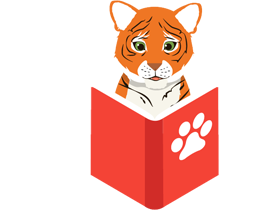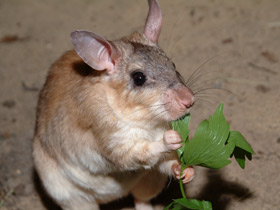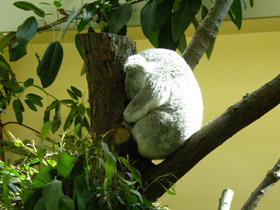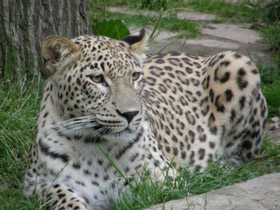The Roloway monkey (Cercopithecus roloway)
The Roloway monkey (Cercopithecus roloway) is a threatened species of Old World monkey endemic to tropical West Africa. It was formerly considered a subspecies of the Diana monkey (C. diana). The species is classified as Critically Endangered due to habitat loss and continued hunting for the bushmeat trade. The Roloway monkey is primarily an arboreal species, inhabiting mostly the forests of Ghana and some reserves in southeastern Côte d'Ivoire. More specifically, studies have shown that C. roloway is mainly concentrated in the Tanoé forest in Côte d'Ivoire, due to its strong threats of extinction and lack of habitat. It is still difficult to collect data on wild specimens, as populations are sparse in a vast forest, but it is a unique and endangered species.
Taxonomy
Both Cercopithecus diana and Cercopithecus roloway were originally categorised under the familiar species group: diana. This categorisation meant that the two apes were related subspecies. This classification, related species, changed in 2005, when each monkey came to be considered its own species, and treated as such. This different classification is beneficial for each species in relation to conservation efforts and justifications for the need for conservation. Funding for extreme conservation efforts may be difficult to find, and when Cercopithecus diana and Cercopithecus roloway were considered related subspecies, the urgency for conservation may not have been as great. Individuals may be more willing to support the conservation of a single species than that of a subspecies.
Appearance and habitat area
Cercopithecus roloway is a species of catarrhine primate (Old World monkeys) belonging to the family Cercopithecidae. Some researchers consider this species to be a subspecies of Cercopithecus diana (Cercopithecus diana), others consider it to be independent.
Cercopithecus roloway is common in West Africa, from the Pra River in Ghana and east to the Sassandra River in Côte d'Ivoire. The species has also been seen in Kakum National Park (Ghana). Its appearance is similar to that of the diana or diana cercopithecus (Cercopithecus diana), with white sideburns framing its snout and a long snow-white beard adorning its chin. Their fur is predominantly black, with a white throat and inner arm and orange hips and back.
The body length of these primates varies between 100 and 145 cm and their weight ranges from 4 to 7 kg. They inhabit deciduous forests and lowland rainforests. Some populations prefer mangrove forests, with plants such as pandanus (a tree-like plant) and citrospermum (a perennial herbaceous plant).
Nutrition and social behaviour
Mangrove forests are located far from the influence of human populations and allow these monkeys to congregate in large groups, and these forests provide a constant supply of food, water and protection. Cercopithecus roloway feed on fruits, flowers, seeds and insects. They usually keep groups of fifteen to thirty individuals, usually consisting of one male, a dozen females and their young. As a general rule, males are not characterised by their inconstancy in family relationships and after a while they go in search of new mates. Females never leave their family group and live in it for life.
Reproduction
Little is known about the breeding and mating period of this species of monkey. It is not possible to say with certainty whether their breeding season is tied to a particular time of year. Generally, once a year the female gives birth to one, very rarely two, young. From the first days of their appearance, the newborns are perfectly at home in the treetops.
Predation
The Roloway monkey does not often employ its "fight" instinct, rather it chooses to flee from danger. Typical predators of the Roloway monkey include the leopard, large prey birds, chimpanzees, and other larger species. In order to survive against these predators, the Roloway will use communication techniques such as warning sounds, or even signals, in order to tell the other members of their group that a threat is near, and they must flee to safety. The predators do have an impact on the population of monkeys, but they are not the primary cause for the decline in overall population, and the reason for the critically endangered title the Roloway has been given.
Cercopithecus roloway on the Red List
In recent decades, the population of Cercopithecus roloway has plummeted and is now considered one of the rarest monkey species. Its populations are threatened by habitat degradation caused by logging and crop production, as well as poaching. Cercopithecus roloway is listed as endangered on the IUCN Red List.









